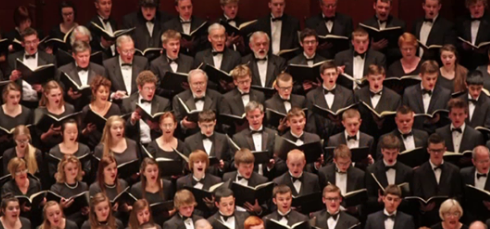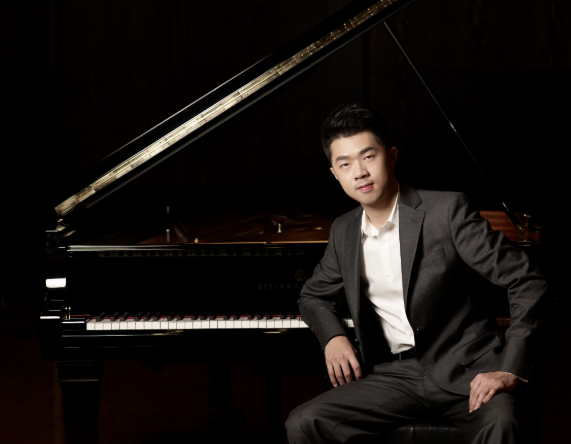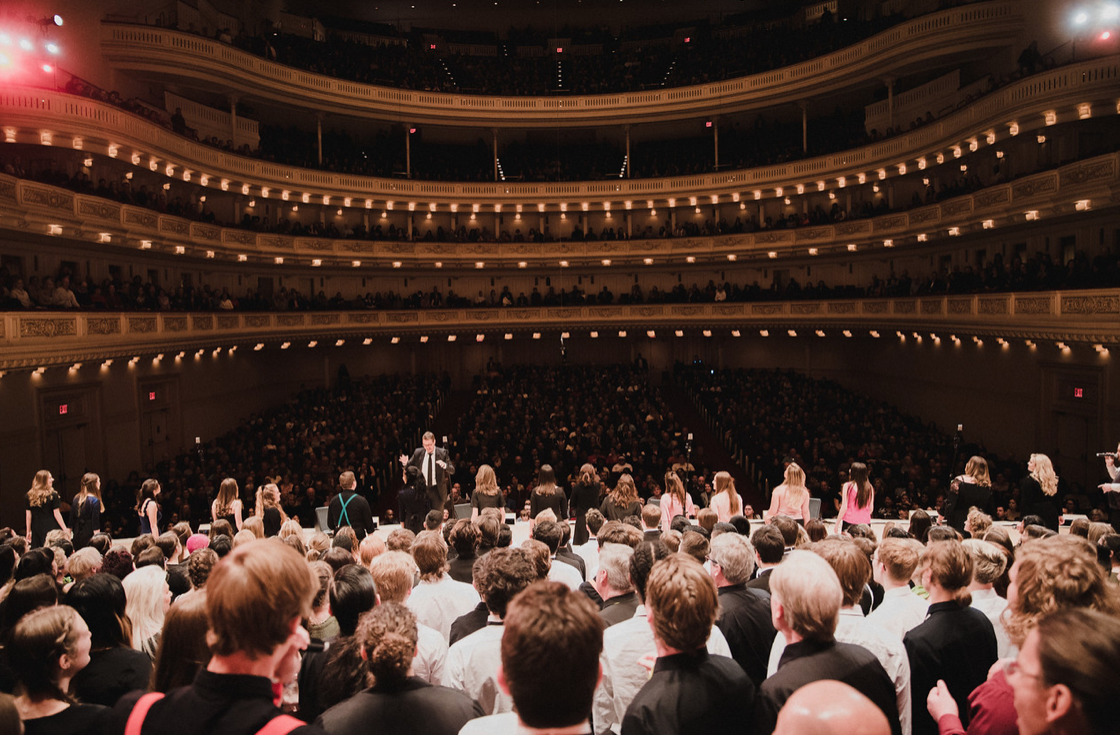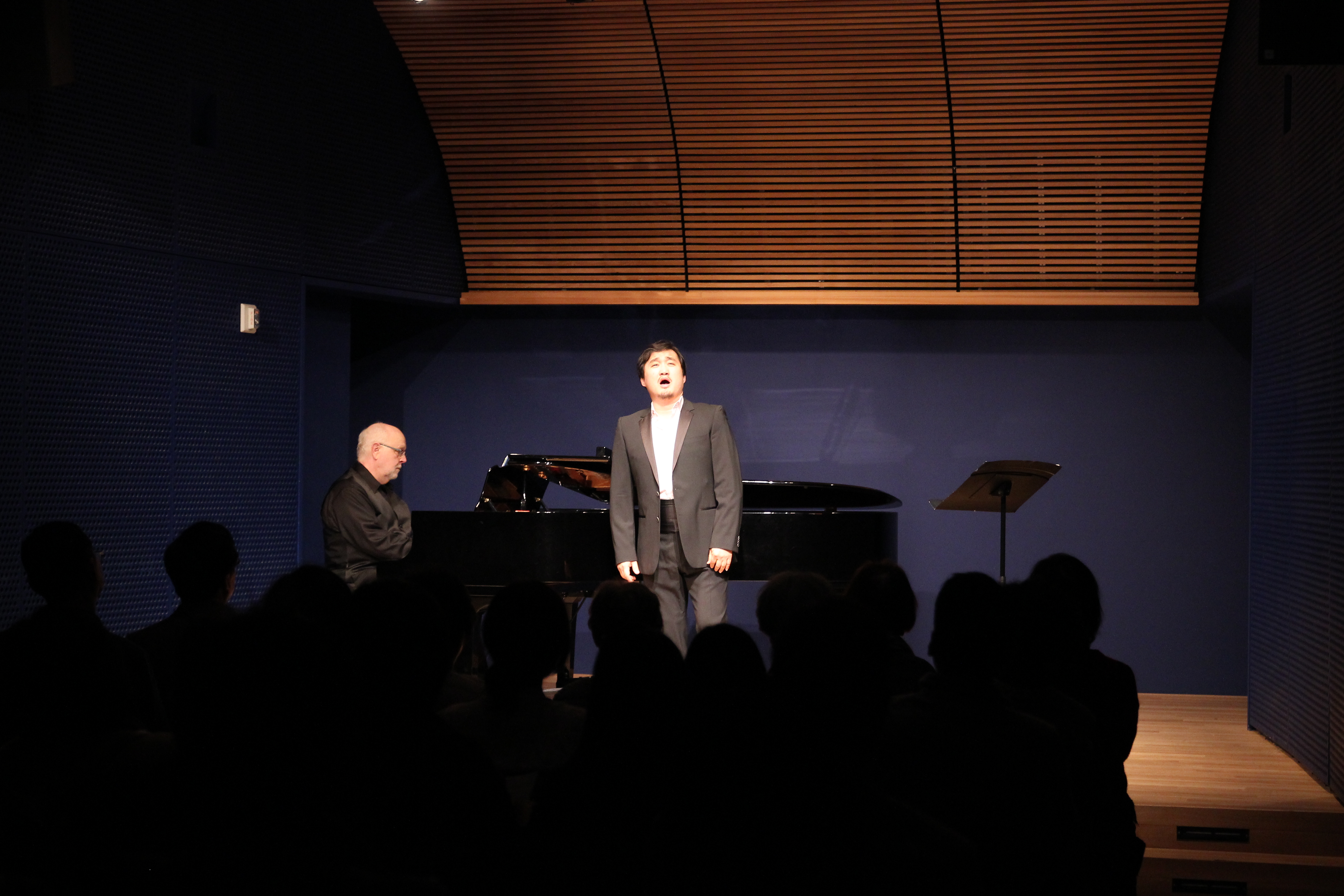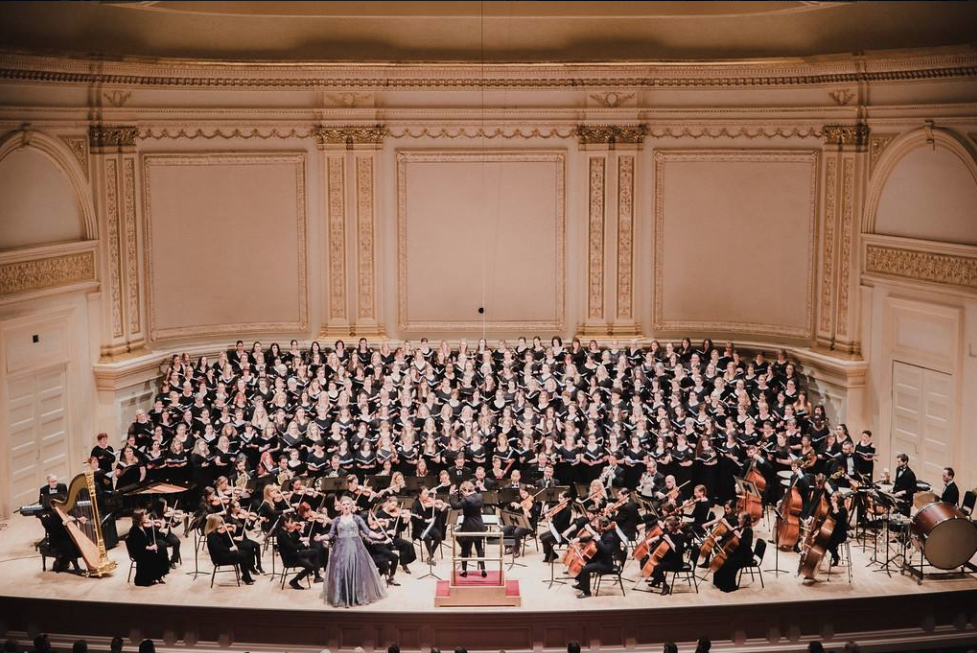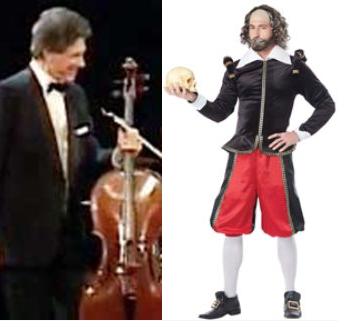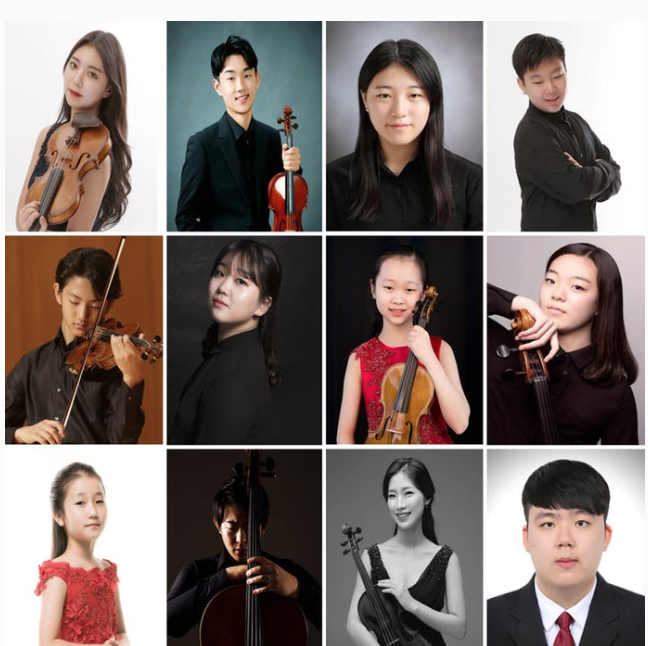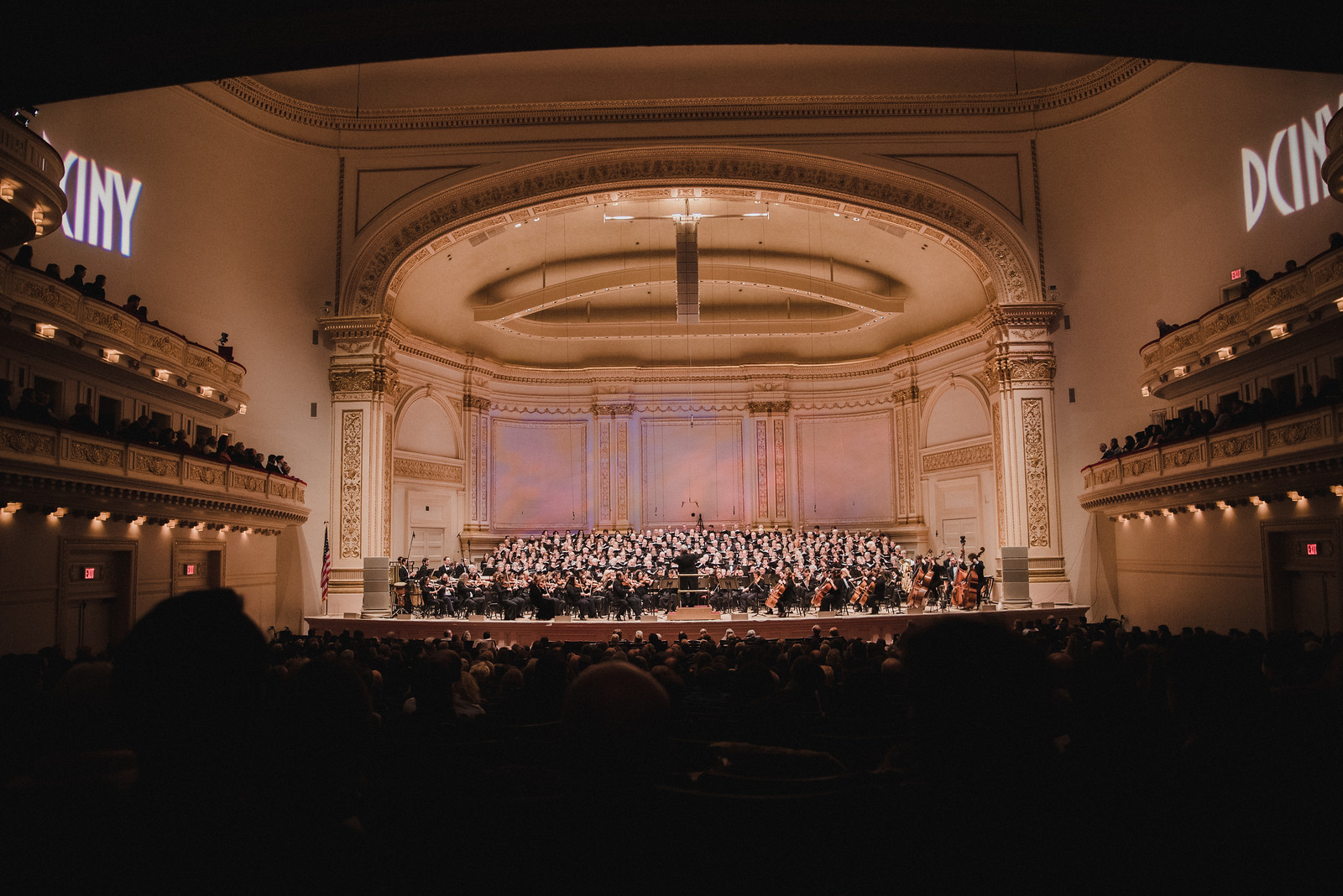Will Todd, DCINY Composer-in-Residence and Pianist
Alicia Walker and James M. Meaders, Guest Conductors; Distinguished Concerts Singers International
Kristin M. Claiborne, Soprano; Craig Butterfield, Double Bass;
Cliff Leaman Saxophone; Chris Lee, Percussion
David Geffen Hall, Lincoln Center, New York, NY
Apr 7, 2019
An entire program at David Geffen Hall was devoted this weekend to the music of Will Todd (b. 1970), Composer-in-Residence for Distinguished Concerts International New York (DCINY). Featured were two large-scale works, Mass in Blue (constituting the first half, conducted by Alicia Walker) and Songs of Peace on the second half (conducted by James M. Meaders), followed by a shorter piece, No More Sorrow. Choruses came from all over (Connecticut, Florida, Kansas, Maine, Mississippi, Missouri, Rhode Island, South Carolina, Texas, and Virginia, as well as Canada and the UK), and Geffen Hall was abuzz with the excitement that DCINY always manages to create.
In case our readers are unfamiliar with Mr. Todd (as this reviewer was), he is a British composer and jazz pianist, best known for combining jazz and blues with traditional choral music. His jazz trio performs regularly and plays a large role in his Mass in Blue (2003), originally entitled Jazz Mass. The mass, commissioned by the Hertfordshire Chorus in the United Kingdom and premiered there in 2003, has since been performed over 200 times at venues including the Barbican, London, and Lincoln Center, NYC, as well as live on BBC Radio. Mr. Todd’s arrangements and compositions overall have been performed before dignitaries worldwide and in prominent venues across the globe. For more information, visit https://willtodd.co.uk
Some may call it bold – or even cheeky – to take the Latin text of the Mass, so reverently treated to noble settings by Bach, Mozart, Beethoven, Schubert, Fauré, Verdi, and others, and to set it chorally against the often insistent rhythms of a jazz trio of piano, percussion and double bass, with saxophone as well; anyone objecting to it, though, is around sixteen years late, as it appears that Mass in Blue has done quite well in terms of repeat performances and overall popularity.
Of course, the use of jazz in religious works is not new, and many artists (Duke Ellington, Mary Lou Williams, and others) have used the soulfulness or earthiness of some jazz styles to express personal faith quite naturally; the Todd Mass, though, sent a different message, and a mixed one, largely due to the juxtaposition of old Latin with his particular style of jazz. There were moments when the sacredness of the venerated texts seemed simply lost in the high gloss of the piano lounge, with all its commercial associations, and one felt a twinge of sadness, as if seeing a dear elder friend abandoned on a noisy, crowded street corner. This feeling would have not arisen had the familiar Latin texts been replaced by original personal ones in the composer’s native tongue, building bridges to a new sacred music through new words. Then again, this reviewer is sixteen years too late in commenting.
In terms of the performance itself, the DCINY rendition of Mass in Blue was a triumph. Conductor Alicia Walker, who works regularly with multiple choruses in South Carolina as well as through international programs, is a dynamo. She led the combined choruses through a performance of tremendous polish and spirit. It had to be a challenge to juggle chorus and jazz trio in terms of both tempo and balance, but she was more than up to it. The soprano soloist Kristin M. Claiborne was also superb, singing improvisatory jazz lines that reached the stratosphere. One reads in Ms. Claiborne’s biography that she, like Dr. Walker, has also led choral groups here and abroad and in fact worked with groups of the singers performing on this occasion. This was quite a team from Columbia, South Carolina, and with the rest of the DCINY singers, they made a formidable group.
Mr. Todd’s Mass in Blue consists of the six usual movements of a mass, the traditional Latin Kyrie, Gloria, Credo, Sanctus, Benedictus, and Agnus Dei – though, again, there was nothing usual about the settings. The work opens with jazz piano, and here it was Will Todd himself at the keyboard, his opening blues improvisation punctuated with soft swishes of the cymbal by percussionist, Chris Lee. Mr. Todd is a highly skilled jazz pianist, for whom piano seems to be the center of inspiration, though he is known for numerous choral works and arrangements.
Soprano, Kristin Claiborne wove her solos beautifully into the first movement Kyrie, but it was probably the third movement, Credo, which showed her in full glory. For anyone unaccustomed to the idea of a mass with 12-bar-blues sequences and “funky riffs” (as described in the excellent notes by Ralph Woodward), the spirit of the performers certainly helped sell it. Thankfully the settings of “crucifixus” and “et sepultus est” reflected more sobriety than much of the rest of the piece, although they still felt somewhat facile. They normally would provide the depths against which the “et resurrexit” line rises, though the latter was still fittingly jubilant. Dr. Walker was masterful, not only corralling these massive forces to keep up with the trio’s highly energized flights, but also reining them in to give leeway to the occasionally freer solo and trio passages.
Percussionist Chris Lee was rock-steady throughout a marathon afternoon of playing with little break, but he also enjoyed the occasional featured moment, such as his somewhat freer “last hurrah” in the third movement Credo. Saxophonist Cliff Leaman shone as well, particularly in the fourth movement, Sanctus.
An opening pizzicato solo from excellent double bassist Craig Butterfield introduced the next movement Benedictus with an unforgettably smooth style. One half expected something along the lines of Van Morrison’s Moondance to break out, but then again, much of the afternoon involved filtering out similar associations of popular music (and classical text) from one’s preconceptions. With that approach there was much to enjoy, including more stunning high notes from Ms. Claiborne in the Agnus Dei. The audience was unable to obey the printed instructions not to applaud until the end of the piece and burst into ovations at the end of the Credo and subsequent movements. There was certainly much appeal here for the audience, and it grew with each added voice, meter change, crescendo, and upward modulation.
The second half by comparison was more subdued. The program notes by Will Todd on his Songs of Peace tell of his mother, who passed away in 2012, and of her importance in instilling “a lifelong interest in choral music and worship.” James M. Meaders was the conductor for this half and was excellent as ever.
The Songs of Peace included six movements: Requiem, Precious Moment (text by Todd), Just as I am (from the traditional hymn of that name), Ave verum, A Song of Peace (text by Todd), and the lovely, lyrical finale, Into the Stars, in which the treble piano parts seemed to twinkle like celestial imaginings. Along with Into the Stars, one of the highlights was Just as I am. As Mr. Todd writes, his mother loved the hymn, which “she always said she would like at her funeral, and indeed this arrangement in a solo piano version was what I played on that occasion. The voices feel like a natural addition.” Though the hymn version was not specified in the program, it was the Saffron Walden melody that Mr. Todd used (this reviewer’s preference too, among a confusing array of versions). It was sensitively arranged by Mr. Todd, with an a cappella opening, a florid jazz center, and touching return to the melody in the end. There was something so direct and immediate at work here that, even though it was a pre-existing hymn, it seemed as if one might be hearing the composer’s truest voice.
The concert ended with a performance of No More Sorrow, another touchingly beautiful song, which offered a much-needed respite from the ubiquitous percussion. (Let there be no mistake – the afternoon’s percussionist was absolutely terrific – but just as with any pervasive flavor or stimulus, one could not after a while fully absorb anything else.) No More Sorrow provided a perfect end to another successful DCINY concert, and the words served as a final good wish for all.

